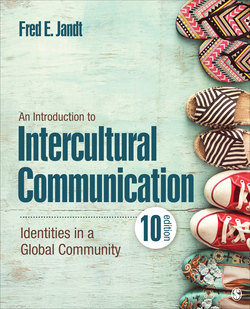Читать книгу An Introduction to Intercultural Communication - Fred E. Jandt - Страница 122
На сайте Литреса книга снята с продажи.
The Concept of Face
ОглавлениеHigh-context cultures place great emphasis on relationships, and in those societies, the concept of face is critical to understand. In Chinese culture, Face is conceptualized in two ways: lien (face) and mien or mien-tzd (image). While these are often used interchangeably, they have different meanings. Hsien Hu (1944) defines lien as something that “represents the confidence of society in the integrity of ego’s moral character, the loss of which makes it impossible to function properly with the community,” whereas mien “stands for the kind of prestige that is emphasized in this country [United States], a reputation achieved through getting on in life, through success and ostentation” (p. 45). Masumoto, Oetzel, Takai, Ting-Toomey, and Yokochi (2000) define Facework as the communicative strategies one uses to enact self-face and to uphold, support, or challenge another person’s face.
Raymond Cohen (1997) provides examples of ways one can lose face:
A rebuffed overture
Exposure to personal insult
Exposure to a derogatory remark or disregard for one’s status
Being forced to give up a cherished value
Making what may later be seen as an unnecessary concession
Failure to achieve goals
Revelation of personal inadequacy
Damage to a valued relationship
High-context societies tend to be more hierarchical and traditional societies in which the concepts of shame and honor are much more important than they are in low-context societies. High-context cultures thus avoid direct confrontation or use communication strategies to maintain harmony and reduce the possibility of conflict. Vargas-Urpi (2013) has shown in one study that Chinese communicators use forms of smiles and other nonverbal behaviors to avoid or to soften uncomfortable situations that will threaten a participant’s face.
Communication in high-context cultures such as China is hence more indirect or implicit. For example, people raised in high-context cultures “expect more of others than do the participants in low-context systems” (E. T. Hall, 1976, p. 98). A high-context communicator expects that the listener already knows critical information, and therefore does not have to be specific. The high-context communicator is more likely to use intermediaries. Social harmony and face maintenance are crucial, so communication through intermediaries is especially functional because using intermediaries eliminates face-to-face confrontation and reduces the risk of losing face.
In interviews conducted in central China, Ringo Ma (1992) confirmed that unofficial mediation is common in situations involving interpersonal conflict. The mediator is usually a friend of the two parties in conflict or an elderly person respected by both. Intervention by the friend or respected elder is either self-initiated or in response to a request by a person not connected with the competing parties. Impartiality and face maintenance are considered the two key factors in successful mediation.
In low-context societies, individuals are guided more by personal responsibility than by shaming one’s group. Ting-Toomey (1985) has proposed that low-context cultures, such as the United States, with a greater concern for privacy and autonomy, tend to use direct-face negotiation and express more self-face maintenance, whereas high-context cultures, such as China, with a greater concern for interdependence and inclusion, tend to use indirect-face negotiation and express more mutual-face or other-face maintenance.
